The potato is more than a side dish – it's a historical figure. Everyone's favorite root vegetable has been around for tens of thousands of years and has contributed to everything from famine to fashion to war to pop culture.
So, what makes the potato special? It could be the spud's versatility or perhaps its effortless cultivation. We'll dig into these topics and more in this comprehensive history of the potato.
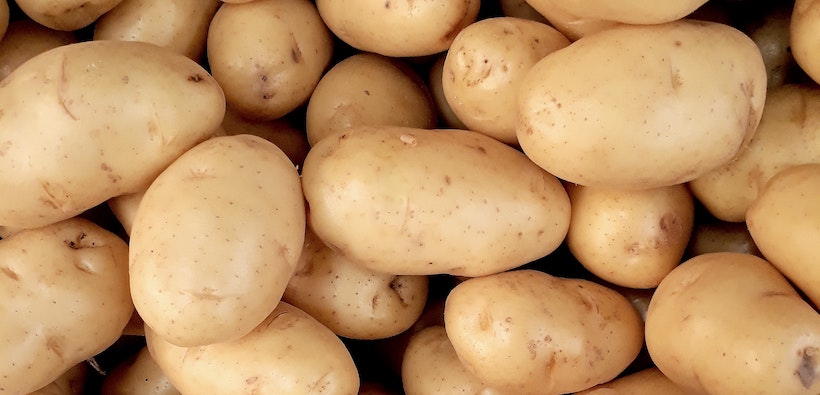
Before we dive into the history of the potato, let's first take a step back and look at the potato itself.
The potato is a root vegetable that originated in modern-day Peru. Also known as a tuber, the potato belongs to the nightshade family, a family of plants that also includes eggplants, peppers, tomatillos, and tomatoes.
While the potato comes from the Americas, it takes its modern name from the Spanish "patata" from when it was introduced to the European continent in the 16th century. The name maintains a striking resemblance in other European countries, with the French calling it "patate" and Italians calling it "batata."
There are more than 4,000 commercial varieties of potatoes globally, and 99% of them are descendants of those grown originally on the west coast of South America. While most potatoes have a brownish hue, you can find ones with red, blue, and yellow skins. A typical spud contains approximately 110 calories per serving and is an excellent source of vitamins C and B6, manganese, and potassium.
That said, not everything in the potato is good for you. Nightshades contain ingredients that are toxins in larger doses, such as solanine and tomatine. They can cause adverse reactions such as digestive effects, dizziness, heart issues – and in large enough doses – even death. Potatoes can also be a breeding ground for Clostridium botulinum, the bacterium which causes botulism.
The average potato takes 70 to 120 days to cultivate. Farmers plant the seeds in the spring so that the final tubers are ready to harvest by May or June. Potatoes grow best when they have cool, loose soil with at least six hours of daily sunlight and temperatures between 45° to 55° Fahrenheit.
There's no shortage of potato varieties in the United States. States like Idaho, Maine, and Minnesota have dedicated large swaths of land to grow a diverse array of spuds. According to PotatoPro.com, the six most popular potatoes in the U.S. are the:
As for dishes? Ha – well, there are more dishes than words in this post. But to cover my bases, some of the most popular potato-based dishes include:
It's worth noting that the potato is not the same as the sweet potato. While both offer a rich source of carbohydrates, fiber, and other nutrients, the two root vegetables vary in appearance and taste. Sweet potatoes are in the Convolvulaceae – bindweed, or Morning Glory – family, not the nightshade. They are both members of the Solanale order.
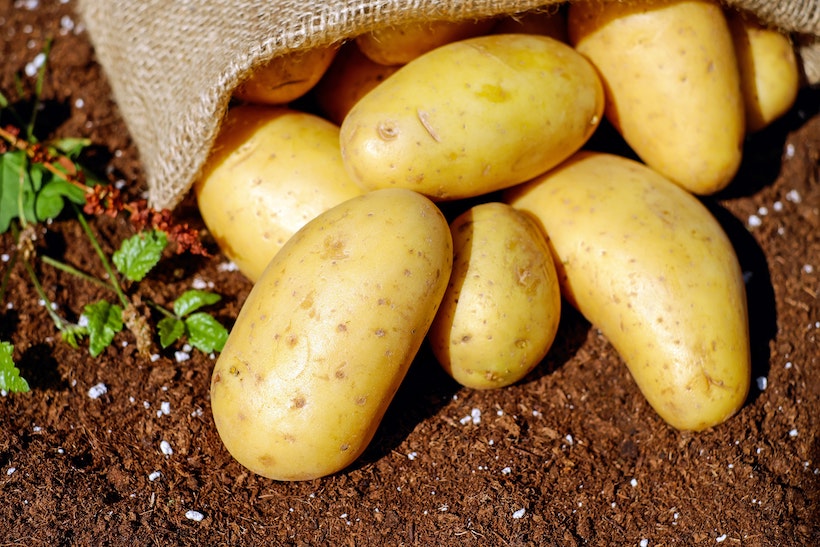
Researchers believe the first wild potatoes existed perhaps as long as 13,000 years ago. Approximately 6,000 years after that, South Americans began cultivating them for food. Archeological evidence suggests that the potato started in the mountainous coastal regions before spreading across the continent.
Peru and Bolivia are the most likely geographic origins of the potato. Archaeologists have found remains from 400 B.C. on Lake Titicaca's shores that show traces of the potato before the Incan empire. Because tubers don't preserve for millennia, researchers have pieced together their presence through depictions and embodiments of potatoes with humans at ancient sites.
Once indigenous people learned to cultivate the root vegetable, it became the backbone of civilization. The potato was a leading energy source for Incans and their Spanish successors. People living in the Andes would mash, bake, stew, and boil potatoes for meals.
Cities and villages in that area of the world experience intense temperature changes because the Andes Mountains are several thousand feet above sea level. Such conditions led to the innovation of chuño, a substance made by dehydrating potatoes for long-term storage—a necessary buffer against unexpected crop failures and famines.
The repeated freezing and unfreezing of chuño over cold nights and hot days allowed locals to extract water from the potato. They then used it in stews and other dishes. The hardy chuño had a shelf life of up to 10 years and maintained its flavor and texture for months, even during long trips.
When Spanish conquistadors reached Peru in 1532 in search of gold, they found Incan miners eating chuño, though they didn't realize its value at the time. The potato arrived in Spain in 1570, where some farmers used it for small-scale cultivation and livestock feed.
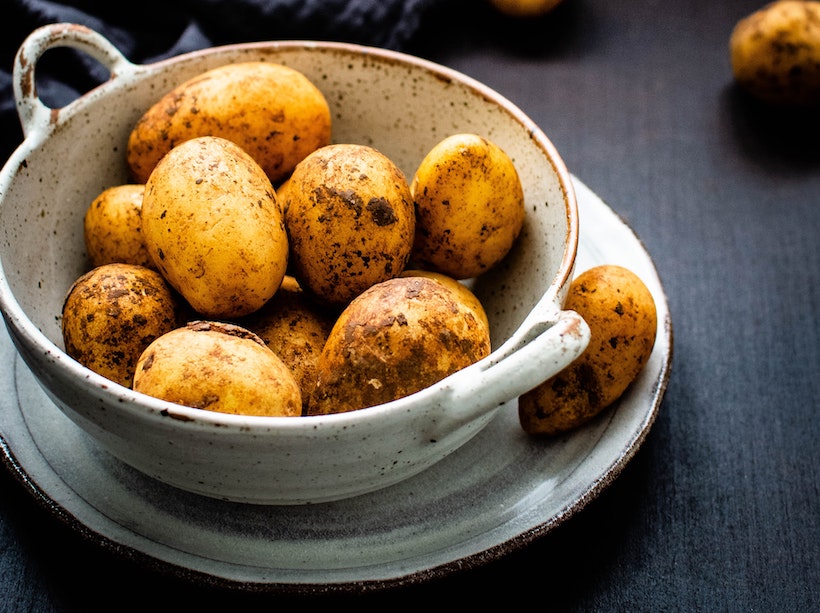
The potato gradually spread across Europe, but its route to global superstardom was far from a sure thing. Like the tomato before it, people regarded the potato with suspicion and distrust. Many Europeans thought it wasn't suitable for human consumption... and fed it to their animals instead.
The distrust for the potato stems from its unusual shape and coloration. Peasants believed the root vegetable was too ugly and misshapen for them to eat. Some superstitious people thought that the nightshade had a hidden connection to witchcraft.
Despite the initial resistance, the potato made its way to Austria, Belgium, the Netherlands, France, Germany, Portugal, Germany, Italy, Switzerland, and the United Kingdom by 1600. Such gradual adoption is a classic case of people changing their minds over time. After decades of distaste, the potato began shaking its unsavory image during – strangely enough – wars and famine on the continent.
Famines were relatively common up through the 18th century. In 1744, Frederick the Great even ordered people to eat potatoes to deal with a food shortage. (To various degrees of success.)
Food shortages were also very common during wartime. The British government promoted potato cultivation to combat hunger and issued the paper "Hints Respecting the Culture and Use of Potatoes" in 1795. The pro-potato pamphlet included ways to grow the root vegetable at home and offered various potato-based recipes.
The British government wasn't the only advocate for the potato. French physician Antoine-Augustin Parmentier studied it throughout his life and publicly promoted the humble spud throughout his career. His formal research highlighted the nutritional benefits of potatoes and encouraged mass adoption.
Parmentier's work eventually reached King Louis XVI and Queen Marie Antoinette. Louis XVI encouraged people to grow the crop while the queen wore potato flowers in her attire. Between 1815 and 1850, potato production more than quintupled in France and helped the country stave off famine.
Meanwhile, Catherine the Great of Russia struggled to overcome the same hurdles as the British government. Russian peasants were skeptical of tubers, even until the mid-1800s. It wasn't until a country-wide grain failure that farmers began dedicating farmland to potatoes.
Potatoes followed a similar trajectory in Germany a century prior. Frederick the Great of Prussia – within memory of his 1744 decree – had to quell farmers' distrust of the potato and ordered mandatory cultivation of it in 1756. The successful implementation later earned him the name Kartoffelkönig or Potato King.
Perhaps no country has a closer association with the potato than Ireland. Sir Walter Raleigh likely introduced it in the late 1500s, but like the rest of Europe, the spud took a long time to reach the mainstream. People gradually grew the potato because many people didn't have enough land for large-scale farming or cattle.
A single acre of potatoes yields 15 to 18 bushels of potatoes per year, the equivalent of 22,000 pounds. If a family has a cow, they can sustain themselves on a nutritionally adequate but monotonous diet. Other benefits of growing potatoes include:
The potato contributed to population growth in Ireland and other countries. Ireland's population reached record highs in 1841 with 8.18 million people. Unfortunately, that's also when the Irish Potato Famine hit.
The culprit behind the Irish potato famine – also known as the Great Famine – was Phytophthora infestans, a mold that causes what we know as potato blight. The mold favors cool, moist environments, identical to those of the potato. When Phytophthora infestans reached Ireland, it dried out or tainted the potatoes it touched.
Ireland was vulnerable to the mold because it had a potato monoculture – with everyone growing the same type of tuber, every potato was equally susceptible to the blight. Millions of people relied on the potato for daily sustenance (through simples meals such as colcannon), and without it, upwards of two million people died. Millions more left the country to flee the famine, contributing to one of the largest mass exoduses in global history. Today, Ireland's population is still below its 1841 level – famously, there are more people of Irish descent in America than Ireland. The potato crop, though, has since recovered.
Because Ireland is an island, the potato blight remained contained in the region. Other countries experienced a population boom through the 1700s and 1800s. While it's impossible to give the potato all of the credit for this rise, it certainly was a contributing factor.
Take the British, for example. The English diet primarily consisted of meat, bread, cheese, and butter before the potato's introduction. The potato served as a nutritious and enjoyable foodstock that diversified the diet of farmers and urban laborers. The same thing happened in France, which had previously experienced many grain harvest shortages.
Still not sold on the potato's value? Consider the following observation from William McNeill's essay "How the Potato Changed the World's History," in which he writes that "every military campaign on European soil after about 1560 resulted in an increase in potato acreage, down to and including World War Two."
The history of the potato doesn't start in the Americas and end in Europe. Researchers believe that the first potatoes made their way to Africa in 1567 on ships set for the Canary Islands. In Rwanda, potatoes are one of the most commonly eaten crops, while Ugandan and Kenyan farmers have cultivated new varieties.
The potato has been a cash crop in Asia since the 1600s, and the Ming dynasty once considered potatoes a delicacy. There's historical evidence documenting the potato's introduction in other countries, such as India and Tibet. Asia has various other tubers that compete with the potato, such as cassava, yam beans, and sweet potato.
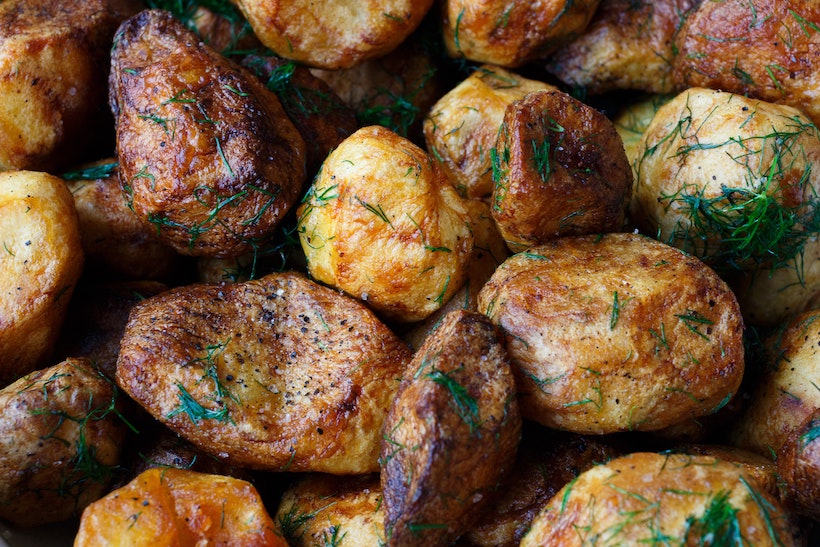
Settlers introduced potatoes to the Colonies... oh, let's call it several times. The governor of Bermuda even sent colonists at Jamestown two chests' worth of potatoes in 1621. For many of the same reasons outlined above for Europe, the potatoes did not take hold in the American public's consciousness. People viewed potatoes with skepticism when most of the population was superstitious and fearful of the unknown root.
The first long-standing potato farms were in Londonderry, NH. Potato crops in New Hampshire were the brainchild of Scotch-Irish immigrants who had grown potatoes in their home country. Their familiarity with the root vegetable and success cultivating it in the new world allowed gradual adoption across the country.
You can still see the roots of these first potatoes today. New Hampshire touts the potato as its state vegetable, while its neighbor, Maine, invented the Caribou russet potato. This newer type of potato offers higher yields than its predecessors, mid-season maturity, and resistance to scabs and nematodes (roundworms that burrow into plants and destroy them).
New England may be the origin of American potatoes, but it's no longer the capital – not even close. That title currently belongs to Idaho, which grows 30% of all potatoes harvested in the U.S. According to PotatoPro, here are the potato-producing states based on hundredweight in 2017 (cwt):
So, what makes Idaho the top state for potato farming? The soil, for starters. Idaho features nutrient-rich, volcanic soil that provides spuds with an ideal environment. The northerly climate and easy irrigation also make potatoes viable in Idaho when they might not be in other states.
Idaho also created the Russet Burbank. Horticulturist Luther Burbank hybridized the potato variety in 1872 in an attempt to improve the Irish potato. The hybrid increased disease resistance and led to a boom in the potato industry.
The potato has become a way of life in the state. It holds annual events such as Idaho Spud Day, the Idaho Potato Conference, and the Hot Potato Festival. College football teams with winning records can also look forward to playing in the Idaho Potato Bowl in Boise at the end of the season.
The Idaho Potato Commission (IPC) serves as the most prominent evangelist for potatoes in the state. It's the group that trademarked "Grown in Idaho" and oversees state-grown spuds' quality and branding. According to the IPC website, Idaho's russet potatoes are "superior to those produced in other states," yielding crispier French fries, fluffier baked potatoes, and better-tasting mashed potatoes.
The state grows 25 different potato varieties, including:
It's challenging to overstate the importance of potatoes in Idaho. According to the IPC, the root vegetable contributes $2.7 billion to the state economy and 30,000 jobs. The state has also set aside 300,000 acres of farmland for potatoes, harvesting 13 billion pounds each year.
Idaho isn't the only place in the U.S. with potato pride. While Washington and Colorado are best known for their scenic terrain, the states also grow a lot of spuds. Each state ranks in the top six largest potato producers in the country.
Washington's moderate climate makes it an ideal place for potatoes, though Washingtonians aren't the primary consumers. According to the Washington State Potato Commission, 90% of its potatoes go out of state. That includes 65% of the French fries made with Washington potatoes going to Japan.
Colorado grows most of its potatoes in the San Luis Valley, where spuds enjoy a combination of mountain water, sunshine, and fertile soil. The state produces more than 70 varieties, including reds, fingerlings, yellows, and russets. Colorado yields approximately two billion pounds of potatoes every year, though it has had some lean harvests due to the Colorado potato beetle.
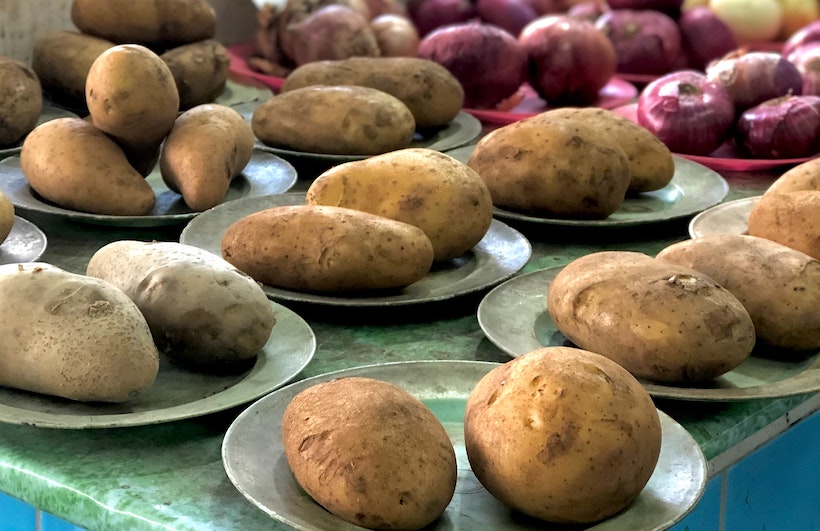
We've only scratched the surface of the potato's storied past. This magical spud has been everything from a staple food in Ireland to a central character in the Toy Story franchise. Here are a couple of other tales about the potato.
France has bestowed the world with many things, like great wine, the hot air balloon, and the sewing machine. However, the country cannot claim ownership of the French fry. That distinction most likely belongs to Belgium.
The legend goes that poor Belgian villagers ate fried fish after fishing in the Meuse Valley. In the winter of 1680, the river froze over, so the villagers turned to the potato for food. They sliced and fried the potato just like the fish, and the French fry as we know it was born.
Most of us peel our potatoes and discard the skin, never to think of them again. That was not the case for some American restauranteurs in the 1970s. Currently, three different restaurants claim credit for birthing this tasty appetizer: R.J. Grunts in Chicago, Prime Rib Restaurant in Washington, DC, and TGI Fridays.
Each restaurant took a slightly different route to achieve the same result. R.J. Grunts created the dish as healthy food, for example, while TGI Fridays chefs fried potato skins one day and loved how they tasted with cheddar, bacon, and sour cream.
William Kitchiner is known for many things, including experimenting with early telescopes, playing music, and studying optics. The Englishman is also the likely inventor of the potato chip. Kitchiner published the first recipe for the potato "crisp" in 1817 in his bestseller The Cook's Oracle.
Some people have attributed the potato chip's birth to Saratoga Springs cook George Crum. A picky customer kept complaining that his French fries were too thick and too soggy. Crum sliced some potatoes thin and fried them until crispy. Today, Saratoga Chips still exist as a brand.
Vodka hasn't always been the crisp and clean version that we know today. In the late 18th century, people in Poland began using various ingredients to make vodkas, such as potatoes and carrots. The result was starchy and coarse alcohol.
So, why did people use potatoes of all things to start making vodka? Likely because it was the cheapest raw material available. While the same thing is no longer true today, potatoes have long been a more inexpensive source of alcohol than grain.
Potatoes are America's favorite vegetable. According to the North Plains Potato Growers Association, American adults eat 110 pounds of potatoes per year. That's nothing compared to Europeans, though, who eat nearly twice as much annually.
When it comes to true potato lovers (and speed-eaters), look no further than English gourmand Peter Dowdeswell. He holds the record for the fastest time to eat three pounds of mashed potatoes: one minute and 22 seconds.
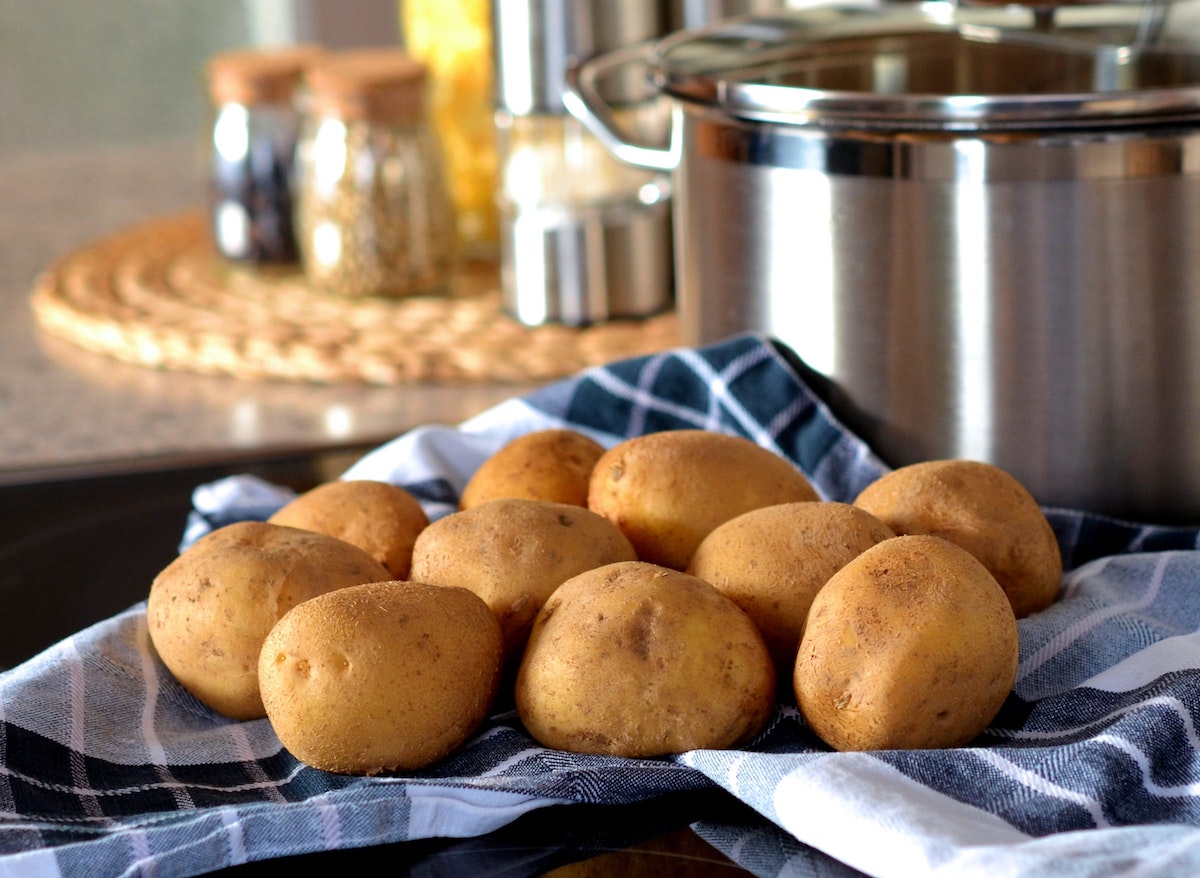
From the Americas to Europe, back to the Americas – and into Asia and Africa – the potato has had quite a journey. It's alternately the cause of famines and the solution to grain shortages that previously plagued the world. It's perhaps responsible for much of the world's population boom since the 1700s and has reshaped everything from farming to warfare.
But above all? It's delicious! There's a reason potatoes are so popular – and I hope the history is as interesting as the taste.